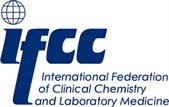Norbert Tietz: a Giant in Clinical Chemistry
Norbert Tietz: a Giant in Clinical Chemistry
by Nader Rifai
Boston Children’s Hospital Department of Laboratory Medicine
Boston USA

On the morning of May 23, 2018, Dr. Norbert Tietz, a major figure in the field of clinical chemistry and laboratory medicine, died peacefully in Georgia, aged 91. Norbert was born in Stettin, Germany in 1926; one of seven children who all pursued a career in science. Two of his siblings became physicians but Norbert believed that a PhD was a harder goal to achieve, so that is what he pursued.
As a World War II veteran and a prisoner of war, Norbert immigrated to America in 1954 to join his brother and to start a new life. He returned home briefly to convince Gertrud to marry him; they met in Munich just before he left Germany. Shortly after, they got married in Chicago and had four children.
His first job was at Rockford Memorial Hospital in Illinois, working under the guidance of Dr. Samuel Natelson, an early pioneer in the development of clinical laboratory methods. At the time, the field of clinical chemistry was undergoing a transformational change driven by people like Otto Folin, Donald Van Slyke, and Michael Somogyi. In the 1950’s, instrumental methods of analysis such as flame photometers and UV spectrophotometers as well as systems such as the Coulter electronic cell counter and the Technicon Auto Analyzer had been introduced and changed forever the landscape of the clinical laboratory. In 1959, he was offered a position at Mount Sinai Hospital Medical Center in Chicago with a faculty appointment at the Chicago Medical School. During his interaction with clinicians, he realized their great dependence on laboratory tests and the need for having a book that bridges modern automated technology and pathophysiology to better connect the medical staff with the clinical laboratorians. Hence he published the first edition of the Fundamentals of Clinical Chemistry in 1969; the 8th edition of this book is scheduled to appear later this year. The Tietz Textbook of Clinical Chemistry followed almost two decades later to become the main reference book in the field.
In 2014, I was asked to assume responsibility for both the Tietz Textbook of Clinical Chemistry and Molecular Diagnostics and the Tietz Fundamentals of Clinical Chemistry and Molecular Diagnostics and to build on the excellent work that Norbert had started and Carl Burtis, Edward Ashwood and David Bruns continued; Carl Wittwer and Rita Horvath joined me to accomplish this task. Jerry Gallwas, a dear and a mutual friend, visited Norbert regularly in his home in La Jolla to share a meal. During each visit, the three of us conversed on FaceTime. I recall once describing to Norbert the vision for the 6th edition of the Textbook and the desire to convert it from a book to a primarily cloud-based platform. He was quite pleased with this and intrigued by the concept and inquired about the publication date. When I informed him that it would be in one and a half year, he said disappointedly “Oh, I will be dead by then” and I immediately answered “that is totally out of the question, you have to stay alive to see it”. His reply was simply “Okay”. I am glad that he lived to see it and for us to have several conversations about it.
Norbert dedicated his book “My Life: From Refugee to Teacher & Scientist” to his “Family, Colleagues, and Students”, those who meant the most to him. His passion for teaching was exceptional and his dedication to education was recognized by both the IFCC and AACC as they bestowed on him their highest honours. Norbert Tietz was an unusual man who contributed greatly to our profession and left an indelible and a long-lasting impression. His legacy in his books and publications will be appreciated for generations to come.
